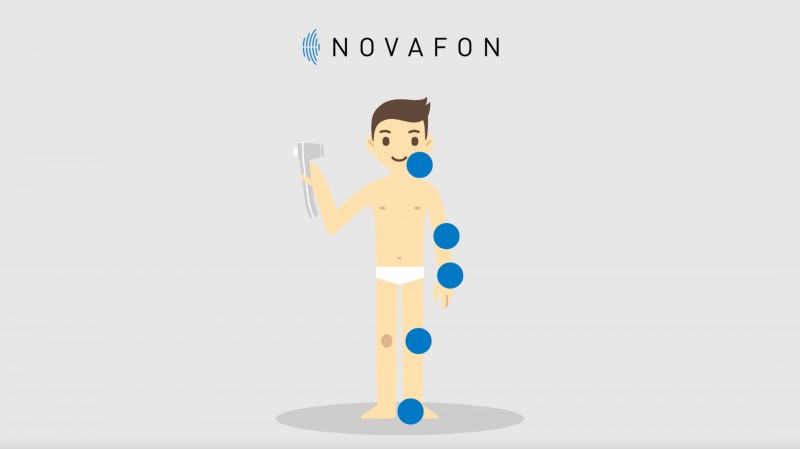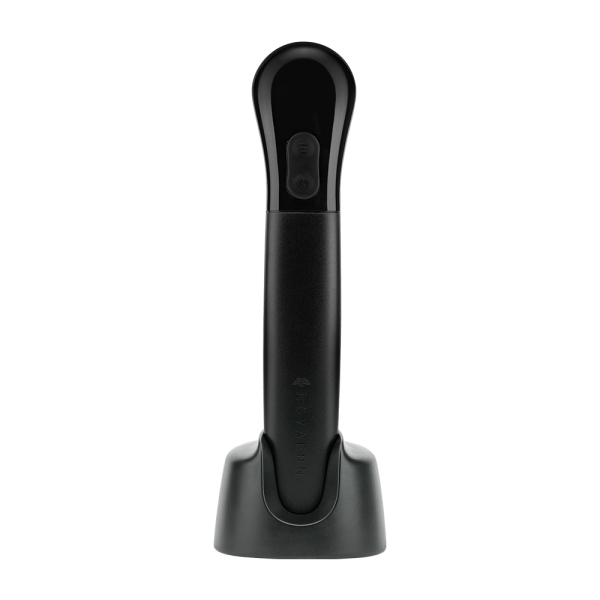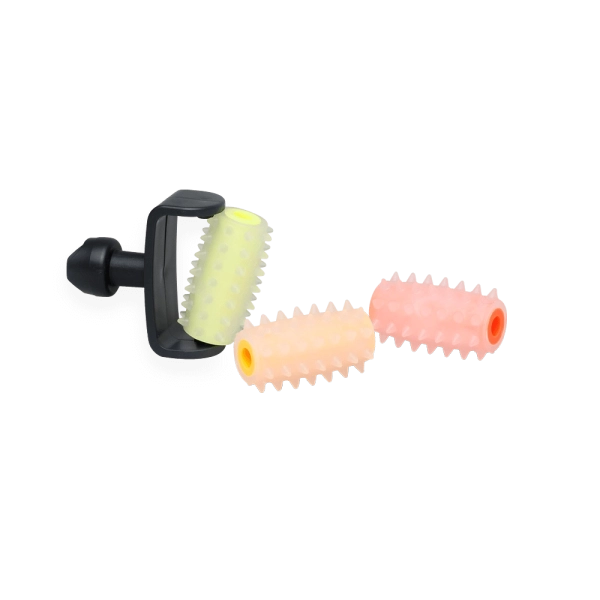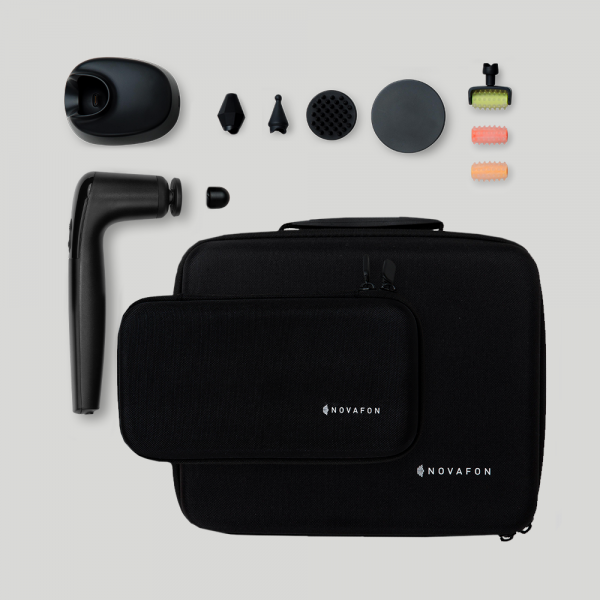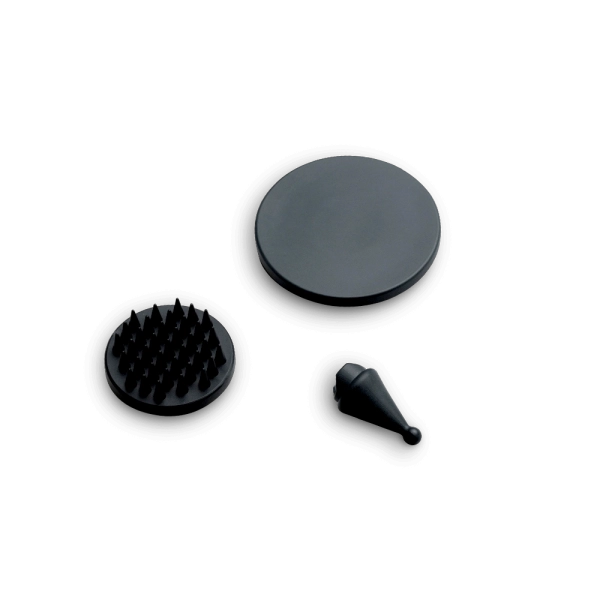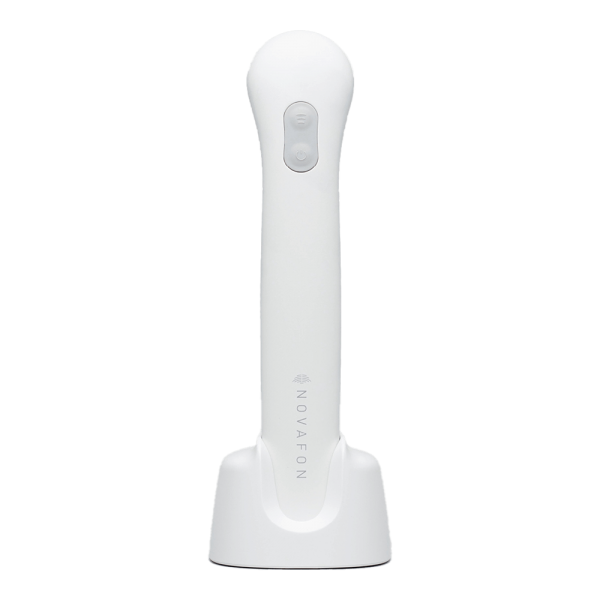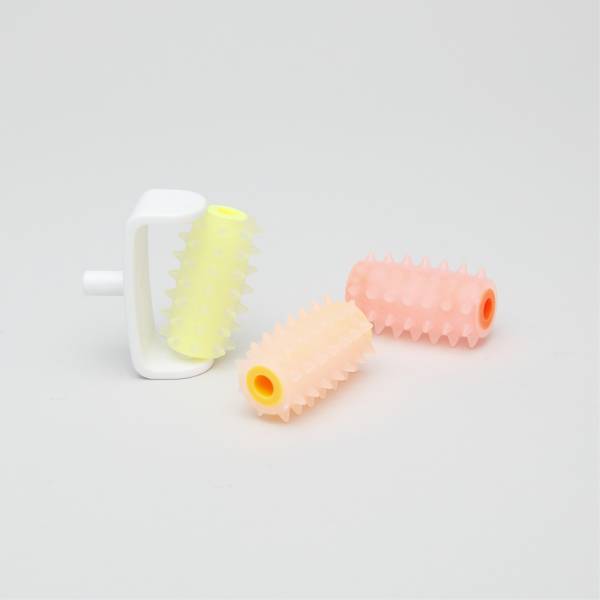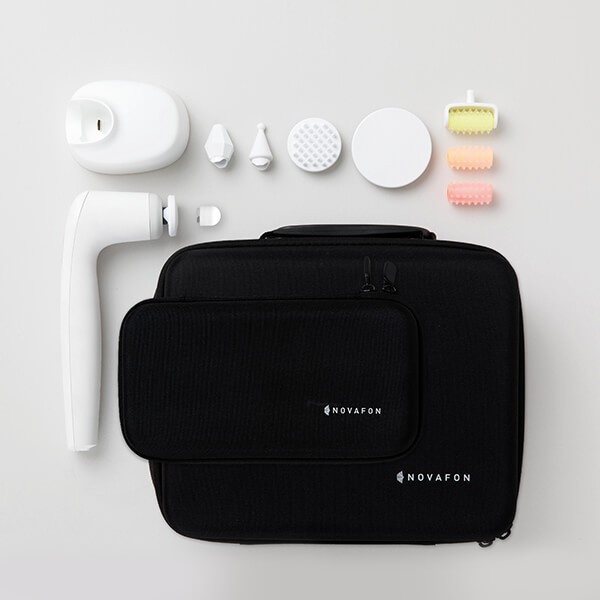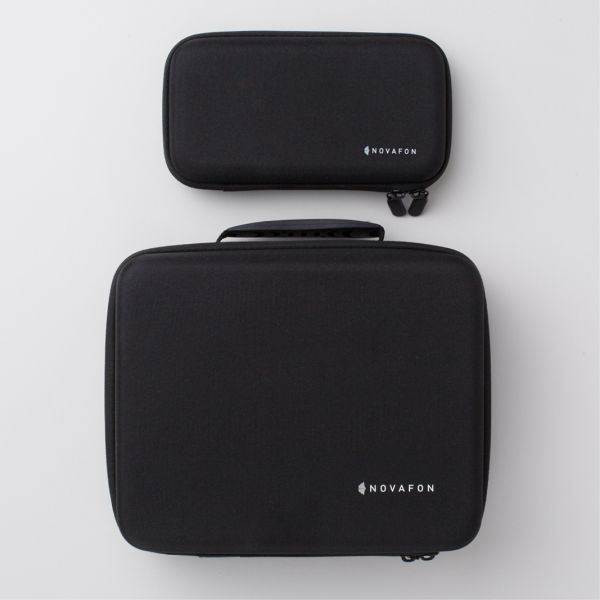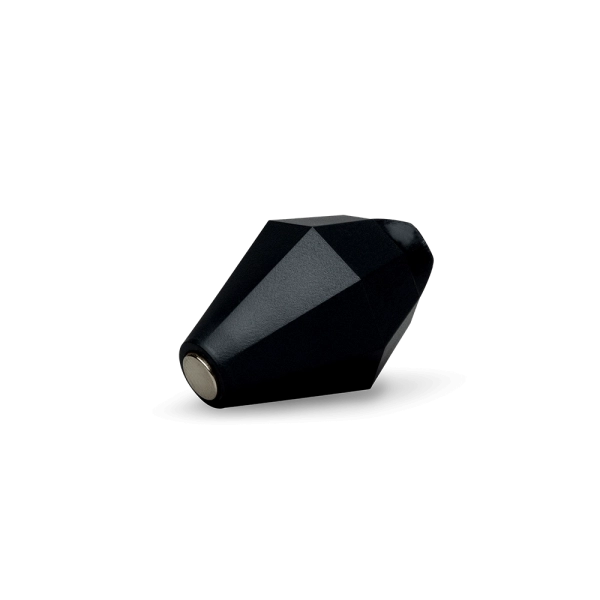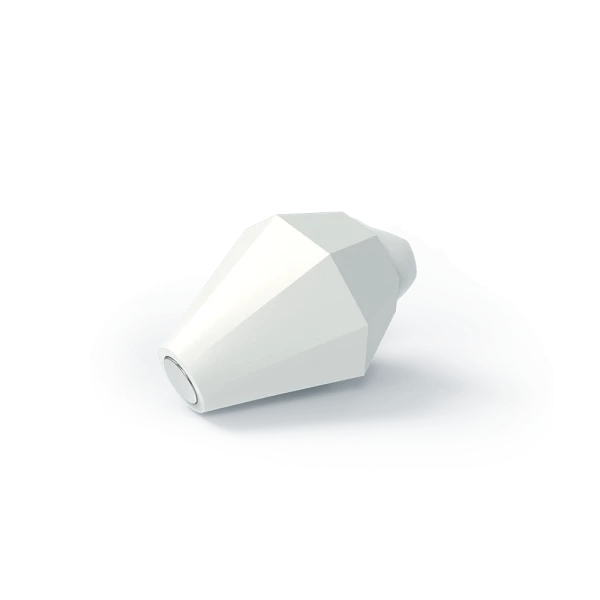Local vibration therapy by NOVAFON
With sensorimotor stimulation towards therapeutic success
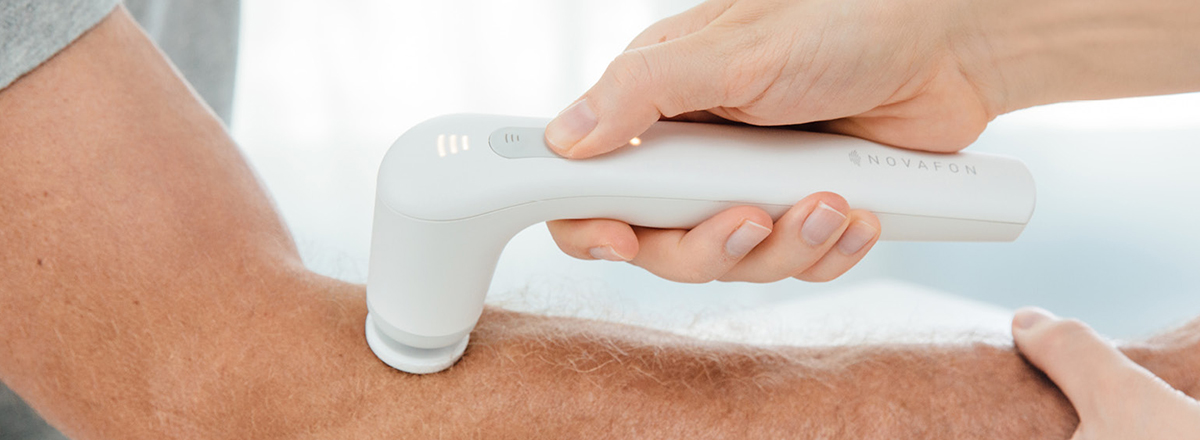
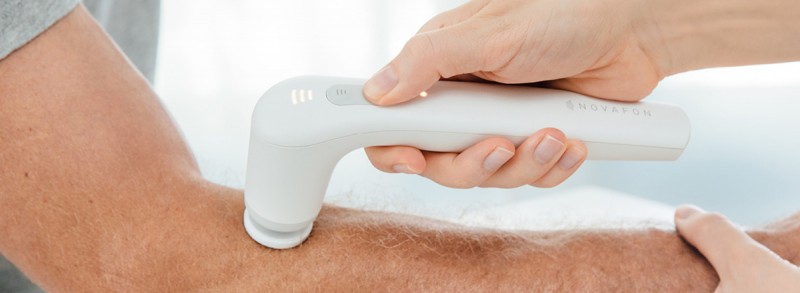
Local vibration therapy
by NOVAFON
With sensorimotor stimulation towards therapeutic success
Speech
therapy
Occupational
therapy
Physio
therapy
Naturo
pathy
Veterinary
medicine
(De-)Sensitisation and improvement of
motion sequences with NOVAFON.
With the aid of targeted local vibrotactile stimulation, the sensorimotor system in the fields of orthopaedics, neurology and hand therapy can be stimulated and tonicity can be regulated. NOVAFON can help to regulate tonicity, promote perception and improve motion sequences. The deep vibrations stimulate muscles and nerves gently but effectively. They can thus be used as medical aids in the treatment of a wide range of occupational therapy-related disorders. Clinical studies have proven a significant added value and lasting therapeutic effects in the treatment of neglect and spasticity, including an improvement in ADLs and improved finger fine motor skills.
Areas of application
Typical areas of application within the field of occupational therapy include motion sequence disturbances as the result of organic brain damage (e.g. stroke, traumatic brain injury, paraplegia, multiple sclerosis etc.) in order to improve motion sequences, muscle tone regulation and coordination.
A further important field for the use of vibration therapy is pain management within occupational therapy with the aid of non-invasive techniques and purposeful activities that activate and enhance physiological pain reduction mechanisms (McCormack GL, 1988).
How to use the NOVAFON device
Hand therapy
Spasticity
Neglect
Pain
Paediatrics
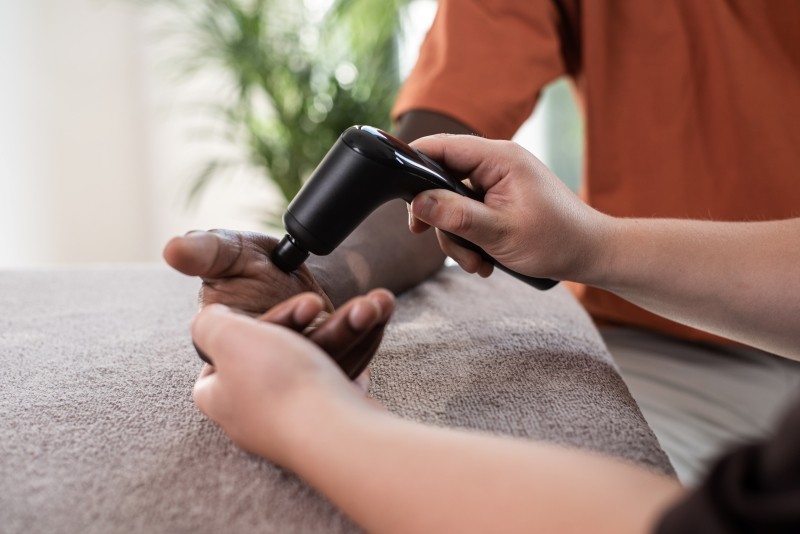
Example: Burn injuries
Aim: Desensitisation
The NOVAFON device with its various attachments is used in hand therapy and in the treatment of scars for the regulation of muscle tone, desensitisation and mobilisation.
“Use of the device has proven itself most of all in the area of hand therapy (e.g. with CRPS, CTS. morbus Dupuytren, arthritis, nerve lesions, swelling and pain). In particular, when treating scars after accidents and / or surgical interventions, the device is ideal for scar mobilisation. The affected area has better blood supply and the tissues become more elastic. Patients report the soothing, deep effect of the device in particular.” (Occupational Therapy, Marienhospital Stuttgart)
Recommended Device
Recommended accessories
Fortbildungen in der Ergotherapie
Recommended products
Equipment + Package
Full package
Empfohlene Fortbildungen
Quotes
In addition to scar massage, it is recommended to use other desensitisation methods if almost healed or still scarred tissue reacts extremely sensitively to normal tactile stimulation, resulting in abnormal sensations and hypersensitivity. Desensitisation techniques can (...) include sensory baths and vibration therapy devices. | Moore, M. et al. 2009. Rehabilitation of the Burned Hand. Hand Clinics. 529-541.
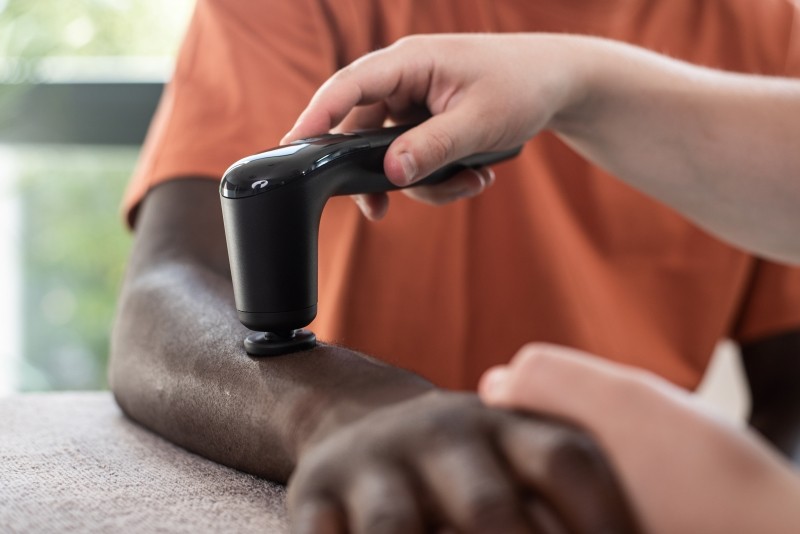
Example: Hemiparesis of the upper extremity
Aim: Improvement of the grasping function
Local vibration therapy is used in the treatment of spasticity as a drug-free method for the regulation of muscle tone. Results from the reduction in spasticity caused by the vibrations include an improved gait and an improved grasping function. The stimulation of the sensorimotor system leads to an improvement in motion sequences and in the perception of the affected part of the body. This applies to patients with stroke, traumatic brain injury or multiple sclerosis as well as to children with cerebral palsy.
Recommended Device
Recommended accessories
Fortbildungen in der Ergotherapie
Recommended products
Equipment + Package
Full package
Fortbildungen in der Ergotherapie
Quotes
Therapeutic application of peripheral muscle vibration was shown to reduce spasticity with a simultaneous improvement in functionality. The patient’s perception of the affected extremity was increased. Independent of the aetiology of the underlying neurological pathology, vibration therapy reduces spasticity, promotes motor activity and motor learning within a functional activity. | Murillo et al 2014. Focal vibration in neurorehabilitation. Eur J Phys Rehabil Med. 50(2):231-42.
“There are four fundamental areas of application for local vibration therapy in neurorehabilitation, regardless of the respective neurological pathology:
- reduction of spasticity
- easing of muscle contractions in functional activities
- stimulation of the proprioceptive system in order to achieve efficient motor control
- use in proprioceptive training in order to restore sensorimotor organisation in patients with locomotor disorders." | Murillo et al 2014. Focal vibration in neurorehabilitation. Eur J Phys Rehabil Med. 50(2):231-42.
Empfohlene Fortbildungen
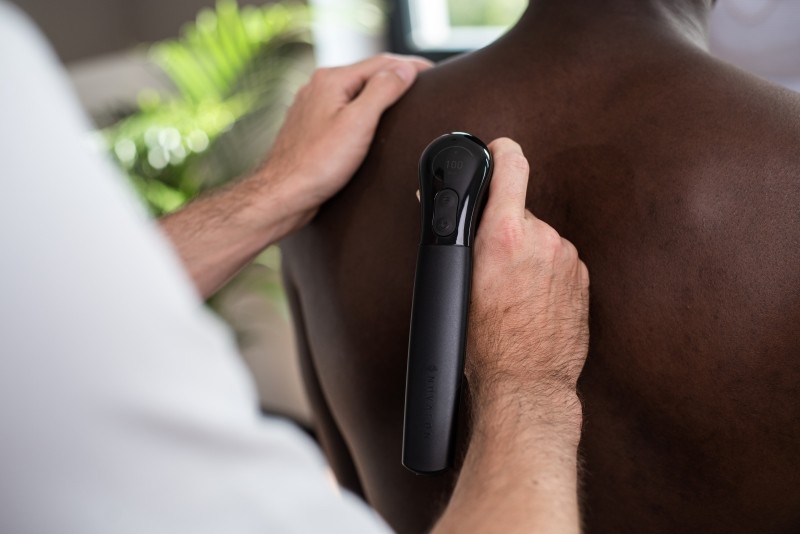
Example: Hemineglect
Aim: Improved exploration performance at the affected side
“Five minutes vibration of the neck muscles before occupational therapy had a positive effect in the treatment of unilateral spatial neglect.” (Kamada et al. 2011)
Several studies have shown an improvement in the visual exploration performance in stroke patients with neglect when the neck muscles, contralateral to the lesion, were stimulated by vibration. This effect stems from the fact that the stretch receptors in the muscles and tendons of the neck are stimulated by vibration, resulting in an apparent rotation of the head.
Recommended Device
Recommended Accessories
Fortbildungen in der Ergotherapie
Recommended products
Equipment + Package
Full package
Fortbildungen in der Ergotherapie
Quotes
In the execution of the therapy, the first step was to find the corresponding stimulation point on the contralesional, posterior neck muscles. This point is determined by fixing a bright spot on the wall (e.g. by means of a laser pointer) in a darkened room. The therapist slowly guides the NOVAFON sound wave device along the neck muscles at medium intensity. The patient sits on a chair for the treatment. The correct stimulation point is determined as soon as the patient reports that the fixed point is moving without moving his/her head. The total treatment time should not exceed 40 minutes, whereby the pure stimulation time should be interrupted by a 5 minute break after 10 minutes. A total of at least 15 treatment sessions is necessary to achieve a lasting effect. | Report of Neurologische Klinik Bad Aibling, Prof. Keller
Empfohlene Fortbildungen
Empfohlene Fortbildungen
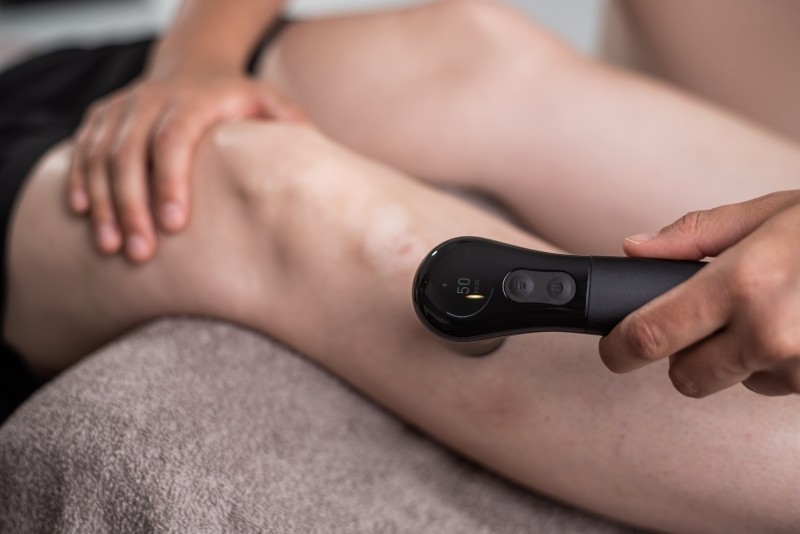
In diseases of the locomotor system, vibration therapy is specifically used for pain relief and for achieving an improved mobility range. The pain-relieving effect of vibrations has already been studied and confirmed many decades ago. For chronic pain of the locomotor system, in particular, significantly better results were achieved compared to drug-based treatments. Because the treatment is gentle and effective, local vibration therapy is very well accepted by patients. Over time it has become an integral part for the treatment of pain in occupational therapy. For amputation-related pain (phantom pain), it has also been shown to have an obvious pain-relieving effect.
Recommended Device
Recommended Accessories
Fortbildungen in der Ergotherapie
Recommended products
Equipment + Package
Full package
Fortbildungen in der Ergotherapie
Quotes
“Clinical research has shown that pressure and vibration applied over trigger points can abolish the pain cycle and provide prolonged relief of myofascial or visceral pain.”
“Treatment plans can be made to stimulate one of the three levels of the nervous system where pain is inhibited. For example, for a patient with a right cerebrovascular accident who has severe muscle pain in the left shoulder, treatment can start with an enabling activity to stimulate the mechanisms that alleviate pain at the skin level of the nervous system. This enabling activity often involves (a) cutaneous stimulation caused by low-frequency vibration and (b) localized point stimulation. The vibratory stimuli activate the Pacinian corpuscles in the deep layers of the skin and suppress free nerve endings, thereby diminishing localized pain.” | McCormack, 1988: Pain Management by Occupational Therapists
Empfohlene Fortbildungen
Studies
Lundeberg T. 1983. Vibratory stimulation for the alleviation of chronic pain.
Lundeberg T, Nordemar R, Ottoson D. 1984a. Pain alleviation by vibratory stimulation.
Lundeberg T. 1985b. Relief of pain from a phantom limb by peripheral stimulation.
Lundeberg T. et al. 1987. Vibratory stimulation compared to placebo in alleviation of pain.

Example: Infantile cerebral palsy
Aim: Body perception
In children, NOVAFON treatment is used to promote perception and also for relaxation and muscle tone regulation. The gentle vibrations are perceived as a pleasant tingling and permit deep proprioceptive stimulation. In children with congenital brain damage such as infantile cerebral palsy, local vibration therapy can help to achieve improved motor control and an improvement in ADLs.
Recommended Device
Recommended Accessories
Fortbildungen in der Ergotherapie
Recommended products
Equipment + Package
Full package
Fortbildungen in der Ergotherapie
Quotes
“The use of local vibration therapy in 200 children with infantile cerebral palsy resulted in improved imitation of motion patterns, an improved body image, improved eye-hand coordination and helped to regulate muscle tone.” | Eklund & Steen 1969. Muscle vibration therapy in children with cerebral palsy. Scandinavian Journal of Rehabilitation Medicine. 1(1):35-37.

